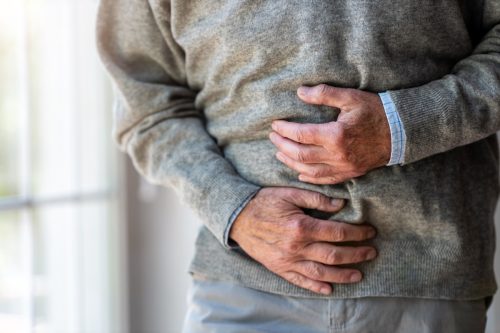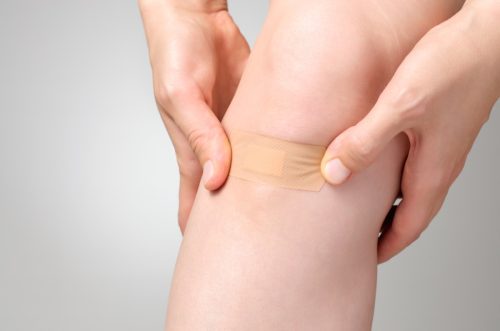Rare Flesh-Eating Bacteria Has Killed 3—What You Need to Avoid Right Now

Flesh-eating bacteria isn’t something we worry about on a day-to-day basis. However, officials are now warning people about a rare variety that has already claimed the lives of three people this summer. According to news reports, Vibrio vulnificus is a flesh-eating bacteria that can cause a range of symptoms—and officials are taking action to warn the general public about staying safe. Read on to find out what they say you need to avoid right now.
RELATED: Malaria Returns to the U.S. for the First Time in 20 Years—How to Stay Safe.
This bacteria can cause sepsis in serious cases.

Vibrio vulnificus is a species of bacteria that can cause “life-threatening wound infections” called vibriosis, according to the Centers for Disease Control and Prevention (CDC). In mild cases, people experience gastrointestinal symptoms, fever, and chills, while more severe cases can result in sepsis, CNN reported.
Vibrio vulnificus is often defined as “flesh-eating” because it can lead to “necrotizing fasciitis,” which is an infection that causes flesh around an open wound to die. (The agency notes that necrotizing fasciitis can be caused by more than just one type of bacteria.)
Now, Vibrio vulnificus has been identified in the Northeast, prompting officials in New York and Connecticut to issue updated guidance.
RELATED: If You’ve Done This, Don’t Go in the Ocean, Doctors Warn—And It’s Not Eating.
Two deaths resulted from infected wounds.

According to recent news reports, three Connecticut residents between the ages of 60 and 80 have been infected with Vibrio vulnificus since July 1, and two of those people died. In Suffolk County, New York, another individual was found to be infected with the bacteria and later died, New York Governor Kathy Hochul announced in an Aug. 16 news release.
While it’s unclear whether the New York resident encountered the bacteria “in New York waters or elsewhere,” the two Connecticut residents who died were confirmed to have gotten infected after swimming in “salt or brackish water” of the Long Island Sound with open wounds, Christopher Boyle, spokesperson for the Connecticut Department of Public Health (DPH), told The Washington Post. “Brackish” water is a mix of salt and fresh water often found where the river and sea meet, per the CDC.
As the agency states, the Vibrio vulnificus bacteria can enter the body through these open wounds, causing severe complications, including intensive care and limb amputations. Having an open wound and going swimming is especially dangerous, as Vibrio vulnificus bacteria “occurs naturally in saltwater coastal environments and can be found in higher concentrations from May to October when the weather is warmer,” the New York press release reads.
With that in mind, the Connecticut DPH notes you shouldn’t swim or wade in saltwater or brackish water if you have open wounds.
“While rare, the vibrio bacteria has unfortunately made it to this region and can be extraordinarily dangerous,” Hochul said in the release. “As we investigate further, it is critical that all New Yorkers stay vigilant and take responsible precautions to keep themselves and their loved ones safe, including protecting open wounds from seawater.”
RELATED: Walmart Shopper Horrified to Find Mold on Food: “Do Not Buy Perishables.”
Another infection was connected back to uncooked shellfish.

Most people become infected by eating raw or uncooked shellfish, specifically oysters, according to the CDC.
The third Connecticut resident was infected with Vibrio vulnificus after “consuming raw oysters from an out-of-state establishment,” the state’s DPH confirmed. This patient was hospitalized and later released.
In general, officials advise you not to consume these foods if they’re raw or undercooked. If you handle raw seafood, you should also wear gloves and wash your hands thoroughly when you’re done.
“Particularly during the hottest months of the summer, bacteria are more likely to overgrow and contaminate raw shellfish,” Manisha Juthani, Connecticut’s public health commissioner, said. “Given our current heat wave, this may be a time to exercise particular caution in what you consume.”
Hochul specifically addressed those with compromised immune systems, instructing them to avoid “raw or undercooked shellfish which may carry the bacteria.”
RELATED: For more up-to-date information, sign up for our daily newsletter.
Anyone can be infected with this bacteria.

According to the CDC, one in five people with a Vibrio vulnificus infection die, “sometimes within a day or two of becoming ill.” Anyone can get the infection, but those who take medications that suppress the immune system or have liver disease are more at risk, per the CDC.
WaPo points out that death is rare, but there have been several reports of infection and death over the past couple decades. In 2005, at least five people in two states died from the infection after Hurricane Katrina, while a man in Maryland died in 2016 after becoming infected through a wound on his leg.
After Hurricane Ian devastated Florida in 2022, there was an uptick in infections as well—and in Connecticut, a death was reported in 2019, while five cases of infection (with no deaths) were reported in 2020.
Best Life offers the most up-to-date information from top experts, new research, and health agencies, but our content is not meant to be a substitute for professional guidance. When it comes to the medication you’re taking or any other health questions you have, always consult your healthcare provider directly.
- Source: https://www.cdc.gov/vibrio/wounds.html
- Source: https://www.governor.ny.gov/news/following-death-suffolk-county-tied-rare-vibrio-vulnificus-bacteria-governor-hochul-updates
- Source: https://portal.ct.gov/DPH/Press-Room/Press-Releases---2023/Vibrio
- Source: https://www.cdc.gov/mmwr/preview/mmwrhtml/mm5437a5.htm